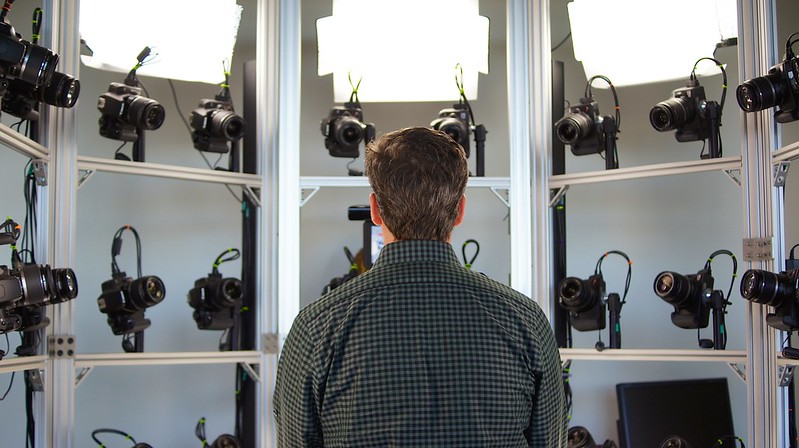A famous person (to me) recently quoted the mantra they use to themselves in conversations, which is “I’m from the future. Listen to me.” I’ve started using it too, and I also convert it to “I’m from the future. Talk to me.” (meaning, I’m not that smart and my ideas are not that unique).
This week, I toured the Autodesk Gallery, in downtown San Francisco, which
celebrates the design process that takes a great idea and turns it into a reality
What I saw, besides the generation of some pretty impressive ideas that have direct applicability to health care was a clearly laid out revolution around DIY (do it yourself) design. The DIY part is being manifested as it is in so many other industries – from comprehensive, high end software packages, to apps on iDevices that consumers can use to be their own designer. See the similarities to health care? From passive health recipient to health activist.
There was everything from the Nike foot waffles, to limb prosthetics that flatter and inspire strength. We actually talk about this at the Center for Total Health : Total Health is defined by our members, not by us – what we know in medicine is that people grow the strongest in the “weak” places.
First, and most appealing to me, is the focus on sustainability and environmental stewardship. Autodesk, like Kaiser Permanente, has made a significant investment in green building and the support of such in the use of their products. Check out the Masdar Headquarters in the United Arab Emirates ( Masdar City > Masdar Headquaters ) – a building that’s “positive energy” – it produces more energy than it uses. We are not there yet at Kaiser Permanente, but we’re getting close, with LEED Gold Hospitals and medical facilities that are 70% powered by the sun.
Also, the concept of Cradle to Cradle Design, which is showcased in the form of an office chair, and is so described:
it is a holistic economic, industrial and social framework that seeks to create systems that are not only efficient but also essentially waste free. The model in its broadest sense is not limited to industrial design and manufacturing; it can be applied to many aspects of human civilization such as urban environments, buildings, economics and social systems.
This is very relevant to the revolution under way in modern health systems to operate in a way that is less toxic, and more healing to the environment around it. There’s a great starter example in health care device reprocessing (see: Now Reading: Little things add up to $15 billion in environmental stewardship by hospitals | Ted Eytan, MD), and I can see this going one step farther from reducing the generation of waste, to products and systems that are designed waste-free from the beginning.
The DIY part appears in a growing part of the gallery, with the presence of a 3D printer (kind of reminds me of that first laser jet…), and more space devoted to consumer tools to facilitate design and production. The idea is that one day, we’ll produce designs that people can take home and print on demand.
The gallery itself, by the way, proudly proclaims its LEED Platinum Status and its connection to active transportation systems around it. I think this is a great idea, to promote walking and other non-passive ways to arrive. It helps change the conversation away from “where’s the parking.”
As I’ve posted previously, colleagues and I from the Kaiser Permanente Center for Total Health (@kptotalhealth) are looking at the best examples in the US of creating learning and enriching experiences across all industries that we could leverage in health. The world of the briefing center/gallery/innovation center appears to be a new one on the landscape as far as I can tell (The Gallery is 3 years old, The Center for Total Health is less than 2). The benefit as I see it is to create an expectation for what people should see, feel, hear, when they interact with an organization, and if Autodesk’s customers are as exceptional as our members are, the bar is set high, where we want it to be.
Our tour guide, by the way, told me that she’s part of a staff of 40 volunteers, who willingly participate in these activities to bring them closer to their customers, which I think is brilliant. Engage your employees, too, in the experience. Thanks, Autodesk, for opening your doors to myself (and the general public, tours are given regularly), and for the inspiration. I listened!
